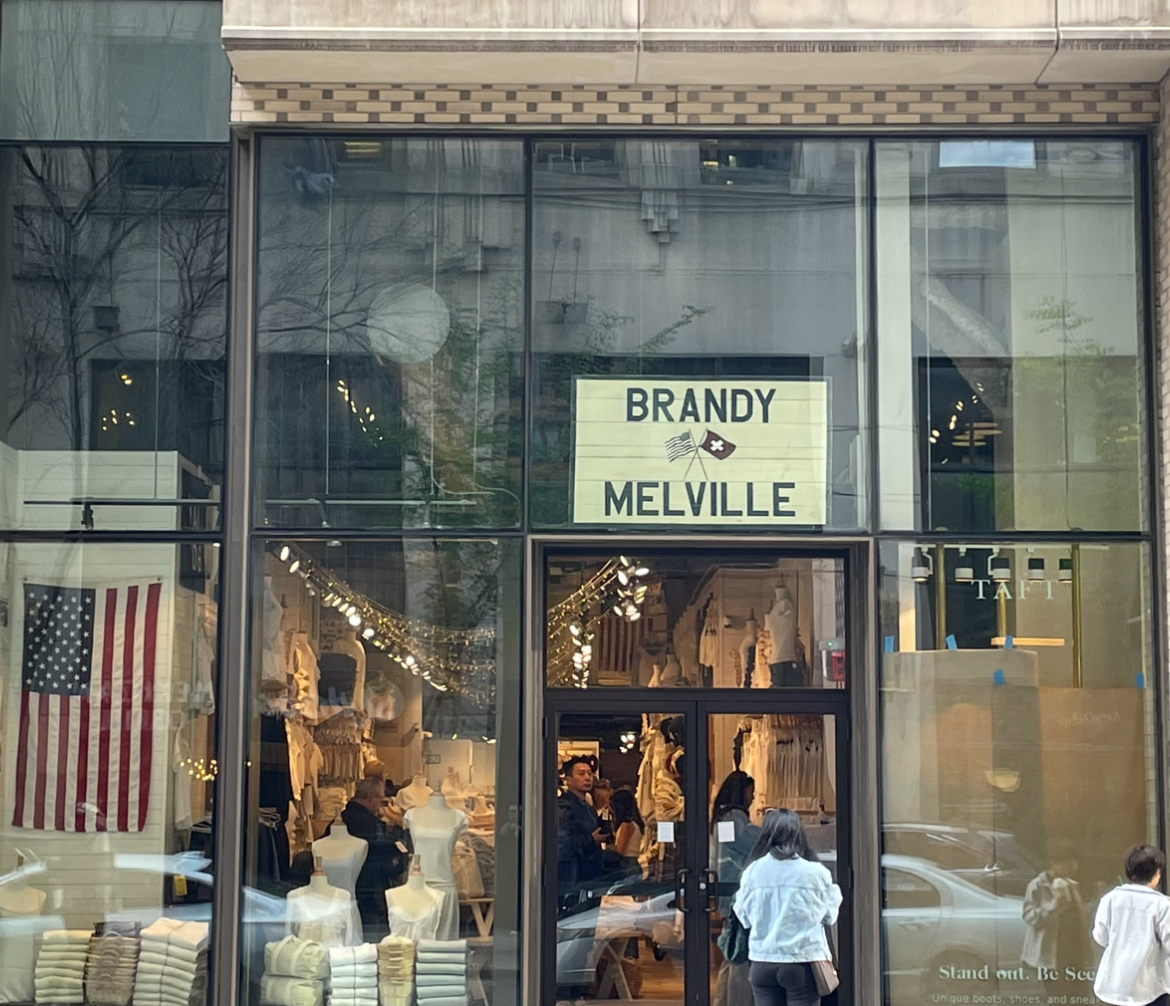
Who really holds power when it comes to creative professions?
Is it the artists, with all of their trial-and-error over countless years to see what styles, media, and forms work best for the type of art they want to produce and the vision they wish to execute?
Is it the persons or entities who control the purse strings, making the achievement of the artist’s vision wholly dependent on their backer’s financial cooperation?
These are a couple of questions that I’m left with after attending the Alexey Brodovitch: Astonish Me exhibit at the Barnes Foundation in Philadelphia, PA, and referencing the finely detailed guide accompanying the exhibit.
Alexey Brodovitch, a celebrated name in the art, culture, and design fields, is known by many as the innovative art director for Harper’s Bazaar from 1934 to 1958 under renowned editor-in-chief Carmel Snow, who convinced William Randolph Hearst to hire Brodovitch after seeing his exhibition design work at the Art Directors Club of New York. And while it is true that this is his most well-known career position, his influence extends far beyond the fashion industry.
Brodovitch, a Russian by birth, fled the country during the Bolshevik Revolution and wound up in the Montparnasse neighborhood of Paris in 1920 – a location that would prove fruitful in his future endeavors. As Montparnasse was home to many artists and Russian exiles, this time saw him absorbing much of the modern art movements happening around him such as surrealism and Dadaism as well as building connections with many of those artists.
The Alexey Brodovitch: Astonish Me exhibit begins with samples of Brodovitch’s design work from his collective days in Paris, Philadelphia, and New York. His commercial art and graphic design work spanned clients from restaurants and department stores to book illustrations and projects for government institutions. Below (left), you’ll see the poster that Brodovitch designed in 1924 for the Bal Banal competition; this garnered him much recognition and kicked off his commercial art and graphic design career. To the right, you’ll see a host of book illustrations that Brodovitch did for various authors.

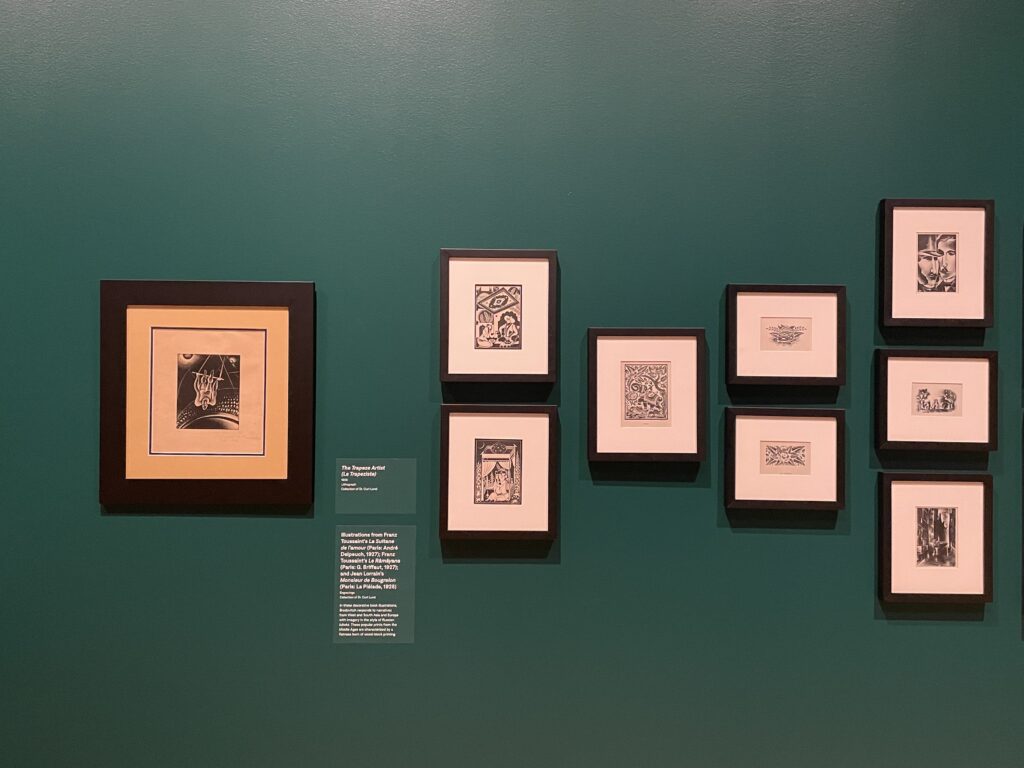
After a chance encounter in 1928 with John Story Jenks, the then-Vice President of the Pennsylvania Museum and School of Industrial Art (currently the University of the Arts), Brodovitch was invited by Jenks to move from Paris to Philadelphia a couple of years later in 1930 for a teaching position. It was here that he introduced his legendary Design Laboratory, a cutting-edge workshop that prepared students for careers as stylists and art directors. Through his various iterations of the Design Laboratory over the next few decades, he mentored storied proteges such as Lillian Bassman, Irving Penn, Richard Avedon, and Diane Arbus.
The exhibit includes works by many of those proteges. Below is a selection of works from photographers Lillian Bassman (left) and Eve Arnold (right).
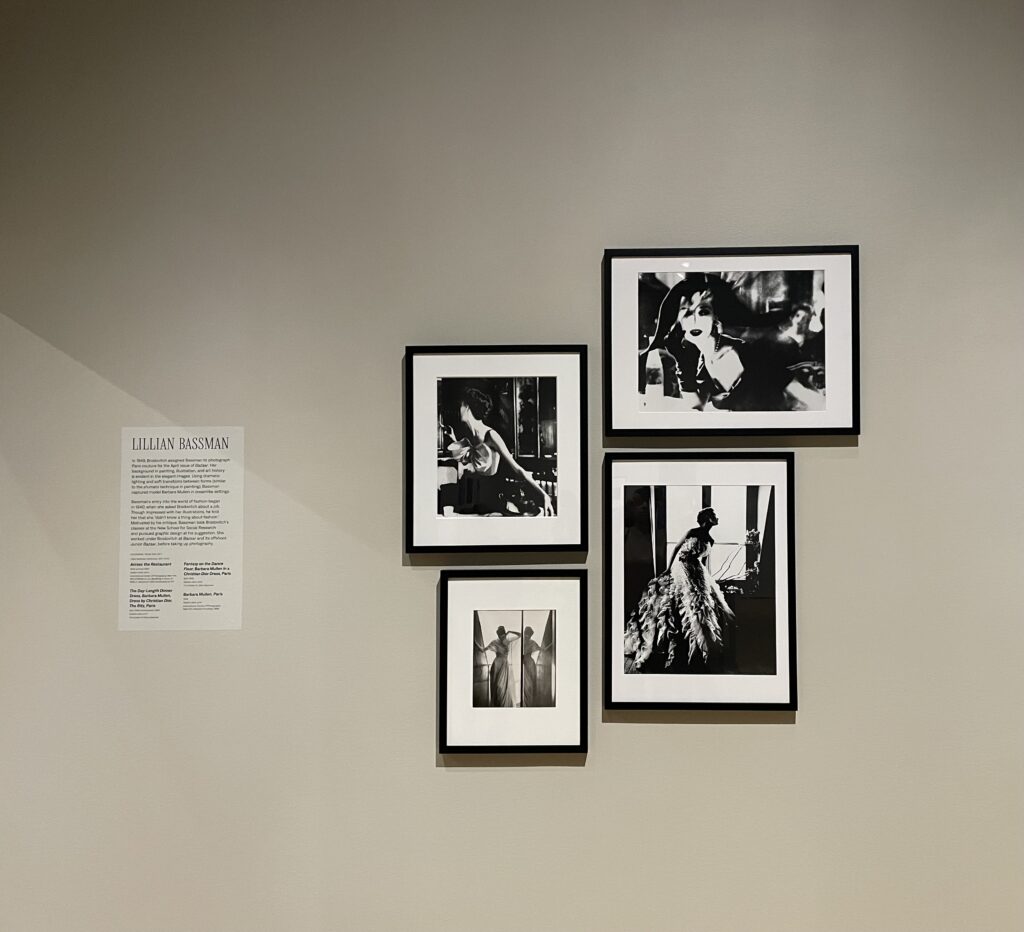

After having received three straight awards from the Art Director’s Club of New York, Brodovitch’s exhibition design work for the club’s thirteenth annual competition caught the attention of Harper’s Bazaar editor-in-chief Carmel Snow, who brought him on as the magazine’s art director not too long after that. Brodovitch, with his European connections to the avant-garde, tapped into those relationships for commissions – leading to some of the midcentury’s most envelope-pushing creative direction in print media.
Below, you’ll see examples of some of the art directing that he did for Harper’s Bazaar.
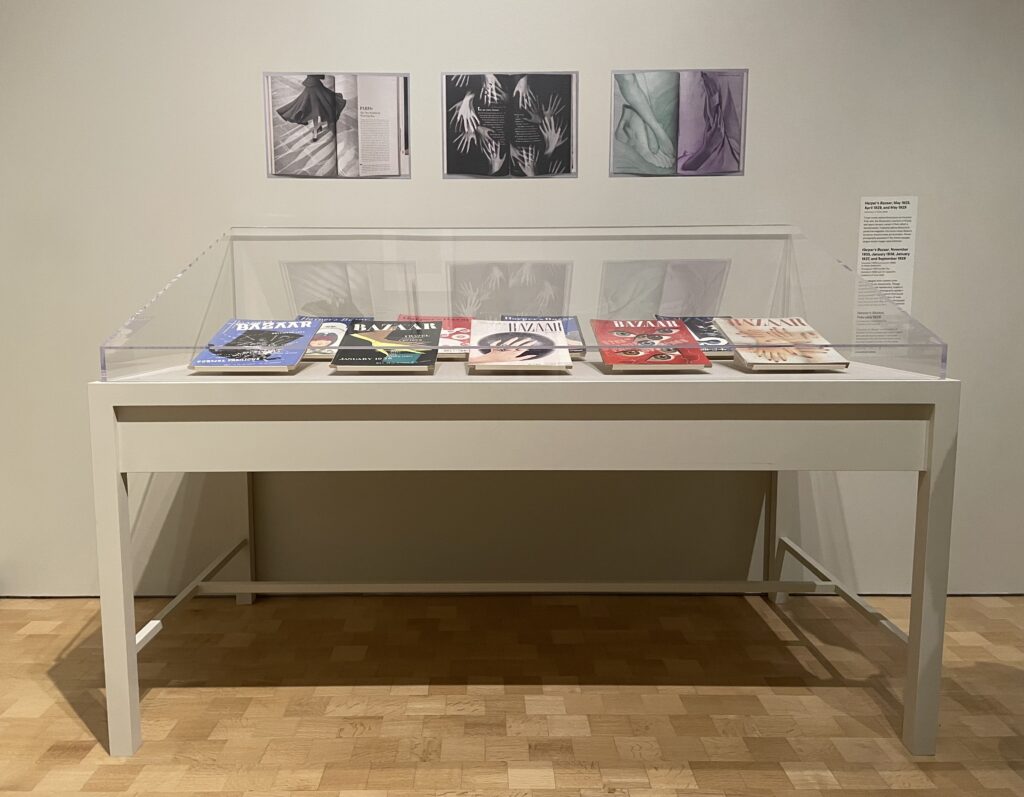
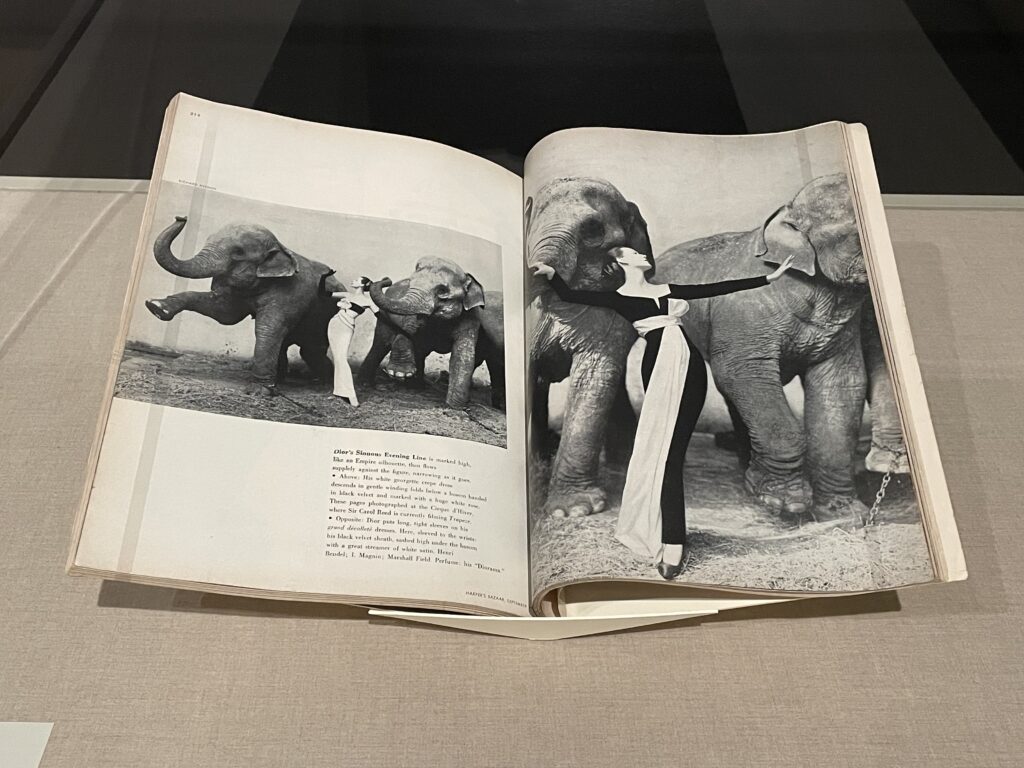
Alexey Brodovitch: Astonish Me, curated by Katy Wan of Tate Modern in London, is as comprehensive of an exhibit as you’re going to get on Alexey Brodovitch’s life and career. Indeed, the Barnes Foundation has billed it as the first major US museum exhibition devoted to his work. That is not to say that other exhibits have not occurred honoring Brodovitch. Here are a couple of others that have come before this one:
- The Museum of Russian Art in Minneapolis, MN hosted Alexey Brodovitch: Designer of the Avant-Garde from June 23 – October 24, 2021.
- The Rochester Institute of Technology’s Cary Graphic Arts Collection in Rochester, NY presented Alexey Brodovitch: Life & Livelihood from March 14 – May 19, 2013.
Then, of course, there have been a few international exhibitions celebrating his influence as well. The fact, however, that this is the first major – and let us define “major” by “well-known”, in this instance – national exhibit of Alexey Brodovitch’s work leaves one to wonder how someone who held so much authority in the arts, fashion, culture, and publishing spheres in New York has not been honored by any of that city’s illustrious arts institutions. This would, for example, have seemed prime territory for the Museum of Modern Art or the Jewish Museum. That the Barnes Foundation took the initiative to honor Brodovitch’s work in Philadelphia – the city where he first made his mark in the United States – has a ring of poetry to it.
But, let’s reference my original question. Who really holds power when it comes to creative professions?
Despite the vast influence that Alexey Brodovitch held for much of the midcentury era as it relates to art direction, graphics, illustration, fashion, photography, and so on……he was still fired from Harper’s Bazaar and stiffed on his pension despite having devoted 24 years to Hearst Corporation. He struggled financially for the rest of his life, eventually having to move back to Europe to be with his family to ensure his survival.
See, as an artist – as a creative – you can inspire and influence untold amounts of people with your work. Your authority can span across time – stimulating the minds of those in the present while guiding future generations toward their own version of greatness.
What happens, though, when you don’t control the money?
Under systems of economic capitalism, disloyalty and manipulation are not uncommon. What do we have to say for a culture that takes our best talent, uses it to prosper as much as possible, and disposes of that talent as soon as it is no longer desirable or convenient to support them?
That this can be done to someone with as much sway over the culture as Alexey Brodovitch should tell all of us that no matter how great our creative talents are – no matter how much we move the needle on artistic culture – we are still vulnerable if we do not control the flow of money.
This is not to say that we creatives should turn into heartless capitalists and take as much money as we can by any means necessary. No. But what it underlines is the need to be aware of our financial situation at all times and be sure that we are going to be okay – whether or not we decide to take direct control of our intake of cash.
And we should double down and create work that feeds our souls and touches the hearts and minds of our various communities.
This is the true power of creative minds like Alexey Brodovitch.
“Alexey Brodovitch: Astonish Me” is open to the public for viewing through May 19, 2024, at the Barnes Foundation in Philadelphia, PA.
To subscribe to Manic Metallic‘s Substack newsletter, click here. To follow us on Bluesky, click here.

